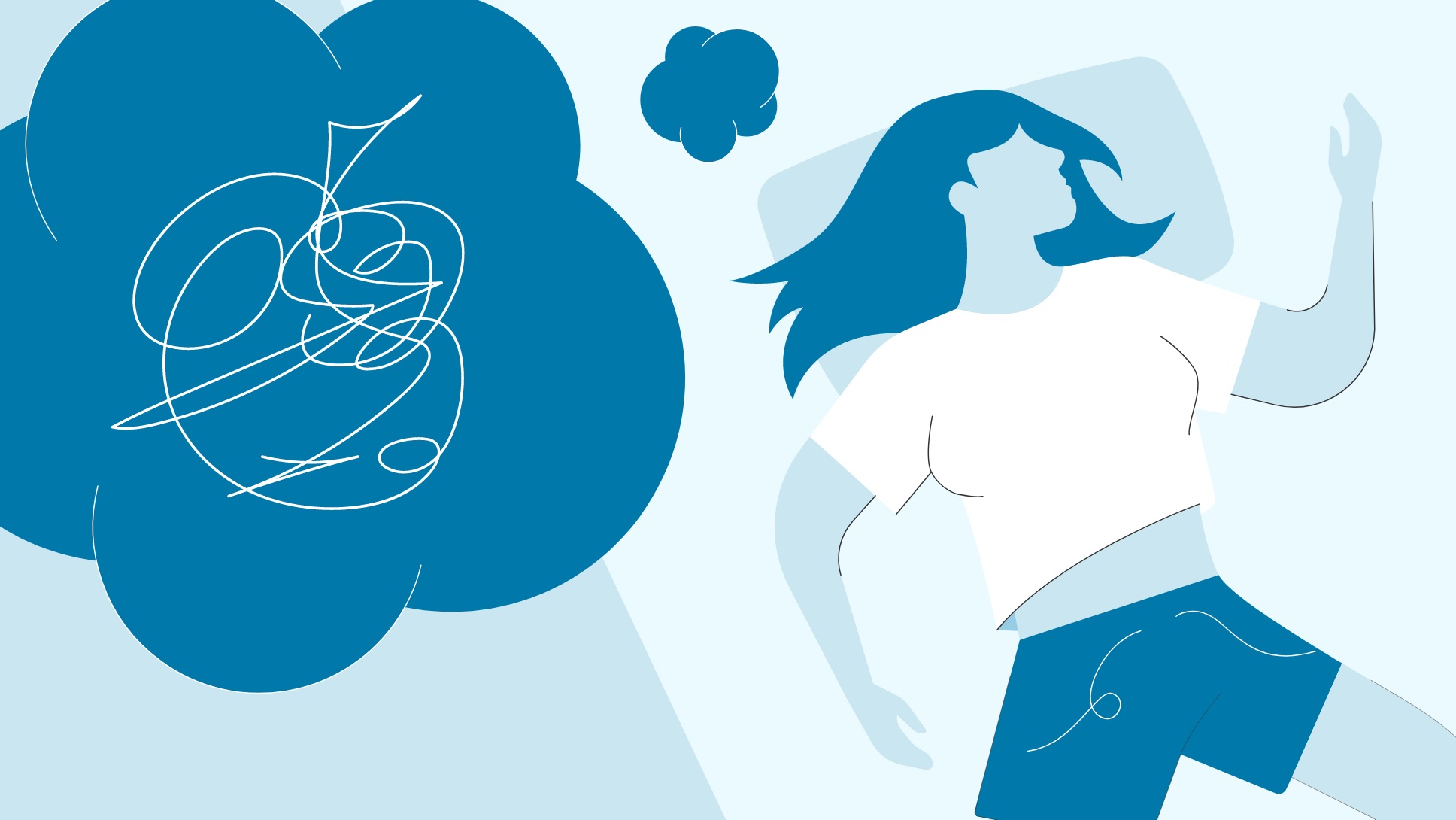At a basic level, the connection between the mind and body has always seemed obvious: If work is too stressful, or your relationship is on the rocks, you might feel the agitation in the pit of your stomach. Spend a month in the funk of depression, and you’re bound to catch the next cold that comes around.
From autoimmune disease to ease of breathing to the flow of blood through your body, it’s clear that our mental and emotional states play a role in determining our levels of well-being or physical vulnerability. For all its inherent logic, however, the notion of the mind-body relationship can have a vague New Age feel: Sure, thoughts and feelings are bound to affect health, but do we know how?
Today, the answer is yes. In hundreds of rigorous studies conducted at the world’s top universities and teaching hospitals, scientists have, over the past few decades, demonstrated beyond any doubt the presence of a feedback loop between emotion, the immune system and the brain — a hard-wired connection between what we feel and experience and our levels of health and disease.
The evidence means we can tap the mind-body connection to protect the heart, stave off cancer relapse and fight the common cold — but the path may be complex. The newest studies point to relationships that are nuanced and intricate: Stress can drive inflammation (a root cause of many diseases), but in measured doses, it might also boost immunity. Experiencing success might prime the health pump or leave you vulnerable, depending on your level of self-esteem.
“The brain is just one of many entry points into a dynamic network of communication that unites all systems — nervous, endocrine, immune, respiratory and more,” says psychopharmacologist Candace Pert, PhD, a pioneer in the field and author of Everything You Need to Know to Feel Go(o)d.
The upshot is that emotions can affect both our psychological well-being and our physical health. Awareness of such mind-body connections can be harnessed to help us stay healthy, but the old notion that positive emotions universally boost well-being, while negatives like stress always keep us sick, has been oversimplified to the point of confusion. It’s a subject that many experts agree deserves closer examination and more rigorous analysis.
What Is Pscyhoneuroimmunology (PNI)?
The modern quest to fathom the mind-body connection dates to 1964, when Norman Cousins, then-editor of the Saturday Review, was diagnosed with ankylosing spondylitis, a degenerative connective-tissue disease. Unresponsive to drug therapy and fading fast, Cousins recalled hearing that positive emotions could boost health. So he checked himself out of the hospital and into a hotel, where he spent his days watching funny movies and reading humorous books.
Eventually he recovered, and his extraordinary account was published in the New England Journal of Medicine in 1976. By 1979, the University of California, Los Angeles, had established an entire center devoted to Cousins’s idea that the brain and the immune system were integrated. A new academic discipline with a tongue-twister of a name — psychoneuroimmunology, or PNI — was born.
Traversing the chasm from Cousins’s anecdotal experience to solid evidence has taken decades, but the evidence is now firm. Among the findings: Stress, even small amounts caused by boredom, can cause inflammation, making us ill. Optimists have more stable cardiovascular systems, more responsive immune systems and a lower hormonal response to stress. The impact can be traced to our very cells: Life events such as divorce or bereavement decrease the number of helper T cells, B cells and natural killer cells needed to fight disease.
From the Outside In
One scientist fascinated by the findings is Bruce Lipton, PhD, author of The Biology of Belief: Unleashing the Power of Consciousness, Matter and Miracles. A cell biologist at the University of Wisconsin during the 1980s, Lipton suffered through a devastating divorce on the heels of his father’s death and decided to take a sabbatical at a medical school on the Caribbean island paradise of Montserrat. Away from his normal life, he began to question everything, including a basic premise of biology — that genes in the nucleus of the cell are life’s masters of control.
“That central dogma set us up to feel that we were victims of our biology,” says Lipton, “that genes sealed our fate, and that we had no choice or free will, or any power to change our biology.”
Yet, examining the cell anew, Lipton determined that most of the cell’s “intelligence” could be found not in its, nucleus, but in its membrane — the complex layer enveloping the cell and allowing it to interface with the outside world. In fact, it was only when the external environment interacted with the cell that genetic expression was set. A classic experiment by Randy Jirtle, PhD, shows how it works: Generation after generation of mice carrying the so-called agouti gene gave rise to offspring that were yellow and fat, and prone to cancer, diabetes and short lives. Offspring were made healthy not by manipulating the gene, but by providing pregnant rat mothers with a diet rich in methyl-containing compounds, turning the toxic gene off.
In essence, this showed that cells were like programmable chips, with the master controllers exerting influences on the genes from the outside. For humans, these “epigenetic” influences included experience and the emotional environment itself. The power of emotion has been convincingly described by Pert, who elucidated the mechanism in the early 1970s.
“The mind is not the product of any organ, not even the brain. [The] body is the subconscious mind, and memories are stored in the body as well as the brain.”
Back then, as a graduate student at Johns Hopkins University, she found a tiny structure on the surface of the cell that interacted — much like a lock would respond to the turning of a key — with opiate drugs such as morphine and heroin. The very presence of that structure, now known as the opium receptor, suggested the body produced its own brand of opiates. Before long, scientists found the source: the natural endorphins generated when we feel excitement or perform physical exercise like running. Eventually researchers found receptors for natural versions of cocaine, valium and caffeine, just to name a few. It turns out that all these innate substances — a combination of neurotransmitters, hormones and peptides — wash through our bodies, activating their corresponding cell receptors and filling us with feelings of bliss, vigilance or dread.
The implications here were remarkable: If the newfound receptors were targets for substances we know to be drugs, it became clear that a person did not have to ingest or inject an external drug for the feelings themselves to launch a chemical cascade. Pert advanced her next breakthrough idea in 1985 at the National Institutes of Health. Working with her husband, NIH immunologist Michael Ruff, PhD, she showed that the receptors in the immune system were identical to those in the brain. It turned out that the mind and body were one, and that health and emotion were inextricably linked. “We can no longer say that brain is to mind as kidney is to urine,” says Pert. “The mind is not the product of any organ, not even the brain.” In fact, she notes, “the body is the subconscious mind, and memories are stored in the body as well as the brain.”
The Complexities of Stress
Much attention has been focused in recent years on the well documented physical impacts that mental and emotional stress have on the body. But even this much-ballyhooed mind-body connection still isn’t widely understood in all of its complexity.
In the short term, says University of British Columbia clinical psychologist Gregory Miller, PhD, stress can serve a purpose: By boosting the inflammatory immune response, it produces immune cells and molecules that battle outside invaders, eliminating infection and healing injury.
Indeed, short-term stress is a positive, says neuroimmunophysiologist Monika Fleshner, PhD, of the University of Colorado in Boulder, who proved her point by studying lab rats, all of which were exposed to bacterial infection, and some of which were also exposed to a laboratory stressor. She found that when rats were infected and exposed to a stressor at the same time, they fought the infection and stayed healthier than rats not exposed to a stressor. Normal amounts of short-term stress, says Fleshner, can boost some white blood cells’ function and help fight infections like colds.
But when stress is long-lasting, the engine of inflammation can run without end. Over the long term, inflammatory molecules can spill into the brain, where they may cause apathy, social withdrawal, fatigue and changes in eating habits. The symptoms look very similar to those of depression, but stress is likely the cause. Whatever such mood states are labeled, the impact on disease can be profound: Runaway inflammation is a cause of autoimmune diseases like multiple sclerosis (immune cells attack the central nervous system), myasthenia gravis (immune cells attack the junction of nerves and muscles) and lupus (immune cells attack skin, joints, heart, lungs, blood, kidneys and brain). While stressful events alone have never been shown to cause these diseases, they are risk factors, capable of increasing intensity or provoking relapse.
But this equation is complex for most people because stress is linked to self-esteem and self-expectation. The first part of the formula makes sense: When those with high self-esteem fail, stress is high. When they succeed, stress is low. But stress also results whenever success defies expectation. The key, says Duke University psychologist Timothy Strauman, PhD, is discrepancy: In a study of students, blood tests showed that those with fewer discrepancies between their view of themselves and the outcome had a greater natural-killer-cell activity. Great success brought immune protection to those who thought well of themselves — but constituted an immune hit for those who felt success was too fast or undeserved.
The Vulnerable Heart
We’ve heard that severe emotional losses can be risky for the heart. But burnout on the job can be just as damaging. For example, Dutch researchers found that flight controllers in busy airports have faster heart rates and higher blood pressure than those responsible for fewer planes.
Even ordinary garden-variety burnout (the kind caused by emotional, physical or cognitive fatigue, or even boredom) can be devastating, notes epidemiologist Samuel Melamed, PhD, of the Sackler School of Medicine at Tel Aviv University in Israel. Melamed found that burned-out workers had a two- to threefold higher risk of heart problems, from myocardial infarction to stroke. Burnout turned out to be so dangerous that it was at least as culpable in heart disease as problems traced to obesity, blood pressure and age.
But just as there are certain emotional patterns that can damage the heart, there are heart-friendly traits and behavioral patterns that can protect it from damage. One protective characteristic is friendliness. Dutch scientists asked young extroverts and introverts to focus on tasks. Extroverted children had more trouble focusing and performed less perfectly in the face of distraction — but introverted children were more heart stressed by those distractions, placing them at future risk.
Another protective trait is trust. Compared with their trusting counterparts, cynics tested by the University of Michigan had higher rates of fibrinogen, C-reactive protein and IL-6, all risk factors for narrowing of the arteries and future heart-disease.
The Importance of Optimism
If PNI holds an overarching good-news message, it’s that we can nurture the traits and lifestyles that lead to good health. But there are caveats here as well. Study after study has documented that immunity is bolstered for those with friends. But contrary to popular notion, the latest research reveals that having only a few important intimates may provide less health protection than having a sizable circle of friends.
Scientists at Carnegie Mellon studied the issue by giving freshmen flu vaccines and then measuring their immune response to the dose. They found that those with larger social networks had a more powerful immune response than those with a smaller number of close friends. Freshmen who said they were lonely and had very few friends had the lowest immunity of all.
In another, parallel study, UCLA researchers identified a distinct pattern of gene expression in immune cells from people who experience chronically high levels of loneliness — bringing to mind the science of epigenetics and documenting that emotions influence not just immune cells but our very genes.
Another health booster is optimism, long considered critical when battling illness or adversity. Indeed, compared with pessimists, optimists have healthier hearts, spryer immune systems and a more subdued hormonal response to stress. But there’s a twist: If your circumstance is arduous, your disease too trying, optimism can lead to fatigue and temporary suppression of immune response.
Why? “Optimists are less likely to give up in arduous situations, and giving up is ‘easier’ on the immune system than continuing to exert yourself to overcome a problem or reach a goal,” explains Suzanne Segerstrom, PhD, a University of Kentucky psychologist who studies expectant emotion and health. That may be more helpful in the case of autoimmune illness, where the problem is inflammation — but less helpful in infection, where immune molecules are needed to fight the disease.
Everything is a trade-off. But researchers seem to agree that the motivational power of optimism — which encourages you to advocate for yourself, stick to your health-supporting regimens and see a health professional when you need to — overcomes any immune hit it provokes.
Curative Powers
Reports that the mind can cure serious disease are fascinating, but anecdotal to date. While miracle cures will always grab headlines, PNI findings point to something else: a nuanced, subtle effect that works T cell by T cell, one immune molecule at a time.
Where PNI can be marshaled fully, however, its importance can be profound. Just ask Tel Aviv University psychologist Shamgar Ben-Eliyahu, PhD, whose recent study shows that physiological stress — especially fear — prior to, during and after cancer surgery, impairs the immune system. “The psychological stressors of surgery deal a blow to the immune system, but this is hardly discussed in the medical community,” says Ben-Eliyahu.
“Ours is among the first studies to show that psychological fear may be no less important than real physiological tissue damage in suppressing immune competence.” The surprising part of Ben-Eliyahu’s study is that stress hormones such as adrenaline, released before and during surgery, underlie the immune decline. Until now, doctors assumed that the immune system was weakened because of tissue damage and the body’s responses to it. A weak immune system is one of the major factors that promotes cancer metastases after an operation, Ben-Eliyahu explains.
“Timing is everything after cancer surgery,” he says. “There is a short window of opportunity, about a week after surgery, when the immune system needs to be functioning maximally in order to kill the tiny remaining bits of tumor tissue that are scattered around the body.”
To this end, visualization exercises that calm fears and promote healing are being used in some hospital surgery centers. (For more on the power of healing visualizations, see “The Mind’s Eye”.) But there are pharmaceutical solutions, too: Ben-Eliyahu is developing a drug protocol to boost the immune system and block the fear-hormone cascade.
Conscious Living
As with most modern tools, PNI should be seen as a chisel and not an ax. Used specifically to boost T cells or lower inflammation, it can be a powerful ally in fighting disease and staying a healthy course for life. Understood as a means of adjusting the body’s biochemical balance through mental repatterning or mind-body exercise and healing techniques, it can be an important support for optimal well-being and vitality.
Meditation, mindfulness, tai chi and deep-breathing exercises can all prime immunity. Simply understanding that negative moods and feelings threaten lifelong well-being can prompt you to seek treatment for mental and emotional pain before your heart is damaged or inflammation spirals out of control. Nurture your friendships; address toxic emotions before they become entrenched. “Unless we can use the mind to communicate with the immune system,” says Pert, “we may never achieve our optimum level of health.”
In the Womb
The body-mind connection starts earlier than you think.
Incontrovertible evidence shows that health strengths and vulnerabilities may be transmitted by mothers to babies in the womb based on the mother’s emotional state during pregnancy. Psychiatrist Thomas R. Verny, MD, DPsych, FRCPC, of the Santa Barbara Graduate Institute, one of the world’s foremost authorities on prenatal and early postnatal environment and its impact on health, has tracked the findings for years. Nuance is often the key.
One study he points to comes from University of Salzburg psychologist Gerhard Rottman, who studied 141 women, dividing them into four categories of maternal suitability from “ideal” to “catastrophic.” Mothers labeled ideal, because they deeply wanted their babies, had the easiest pregnancies and deliveries and the healthiest offspring. Those labeled catastrophic clearly didn’t want their babies — they had the most extreme medical problems during pregnancy and the highest rate of low-weight, premature and emotionally disturbed infants.
But the most interesting findings came from the two intermediate groups; these mothers said they wanted their children, but psychological tests revealed something amiss. These unconsciously ambivalent mothers gave birth to babies who were often irritable due to gastrointestinal problems or nerves.
Verny explains: “Maternal molecules of emotion, including stress hormones, such as adrenaline and noradrenaline, neurohormones, and sex hormones, reach the unborn child through the umbilical cord and the placenta. In this sense, the unborn child is as much a part of the mother’s body as her heart and liver.”
The body-mind connection starts earlier than you think. Of all the emotional risk factors we face from our time in the womb onward, the best documented and most corrosive is probably stress. Verny ticks off results from studies in recent years: Mothers of schizophrenic offspring are almost twice as likely to have rated themselves depressed during the sixth or seventh month of pregnancy.
Babies whose mothers were under stress while pregnant are at higher risk for hyperactivity, motor problems and attention deficits than babies of calm mothers. Emotionally disturbed mothers give birth to babies at higher risk for sleep problems, digestive problems and irritability. Other health risks include cleft lip, cleft palate, spina bifida, heart disease, hypertension, high cholesterol, osteoporosis and future fractures, enhanced susceptibility to seizures, adult type 2 diabetes, and various types of immune dysfunction.
There are hundreds of such studies, says Verny, and evidence only mounts. “Emotional disturbances in the pregnant mother lead to increased production of stress hormones,” he says. “These, in turn, can have adverse impact on gene regulation, precipitating excessive destruction of neurons and synapses, changing organization and function of the brain, and damaging the baby’s future ability to deal with stress.”
The good news? The inverse holds as well, he says. “Maternal emphasis on joy and love bathes the growing brain in feel-good endorphins and neurohormones such as oxytocin, promoting a lifelong sense of well-being.”
More Resources from Experience Life
For more on the health connection between our minds and our bodies, check out the following articles:
• “A Real Pleasure”
• “Functional Wellness, Part 5: The Body-Mind Connection”
• “Change Your Mind”
This article originally appeared as “The Healer Within.”




This Post Has 0 Comments